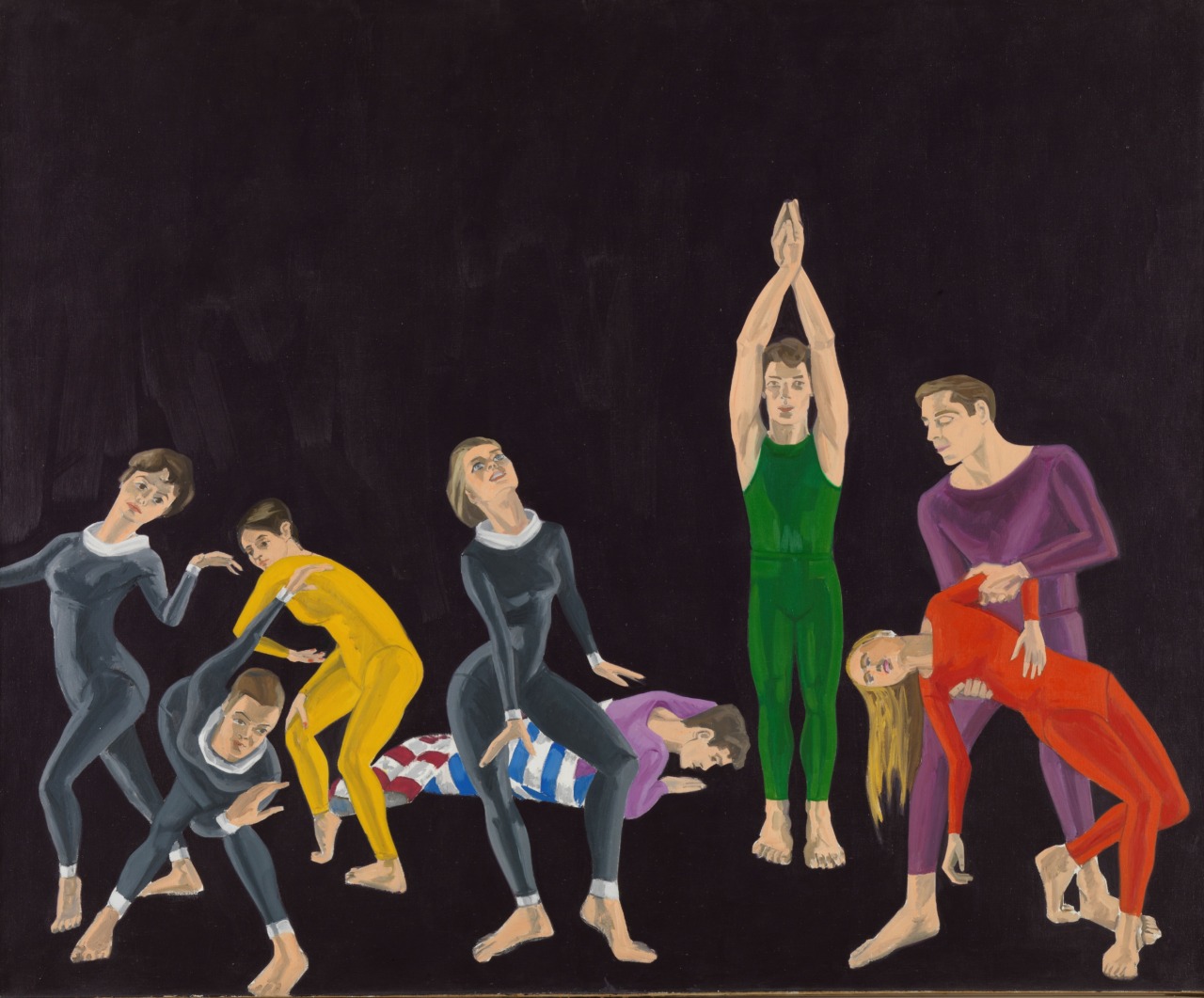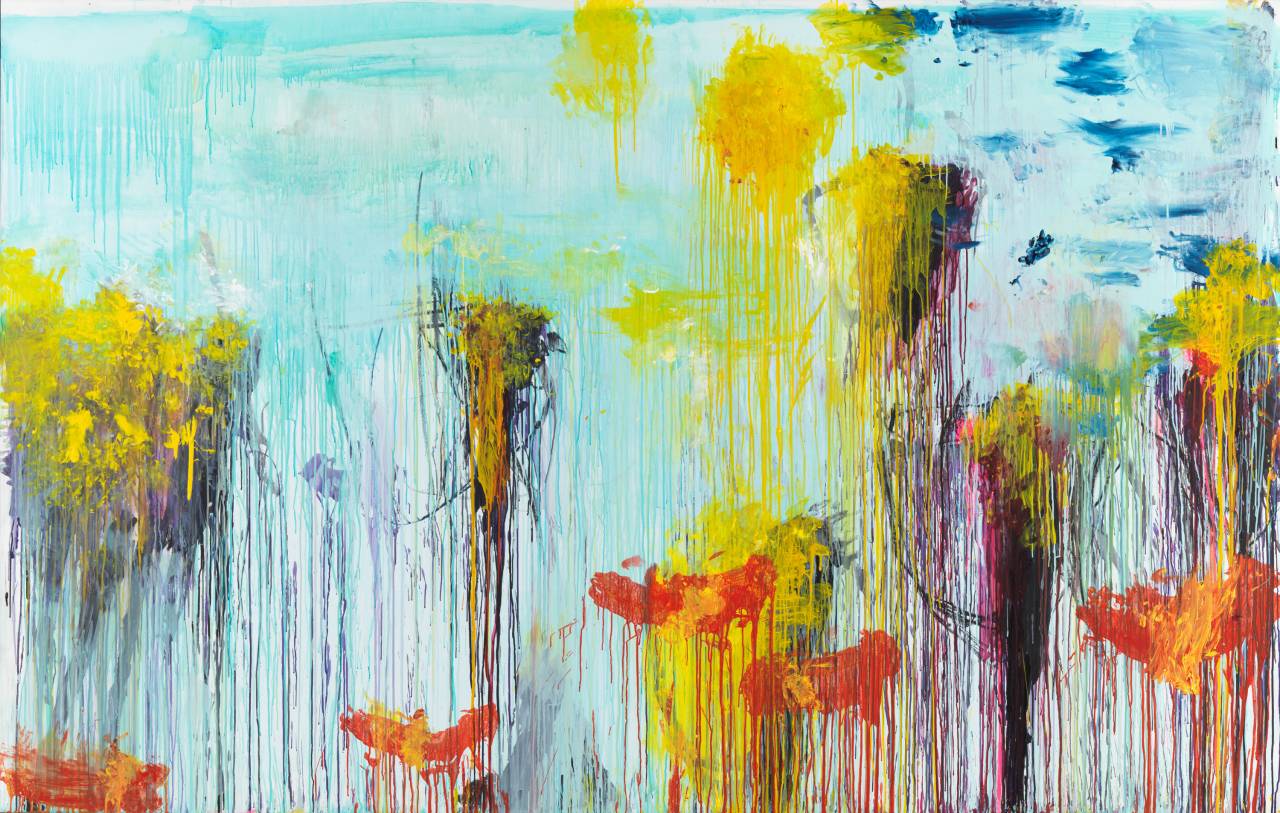Kerstin Brätsch. Innovation
PRESS RELEASE FOR THE PRESS CONFERENCE ON MAY 23RD, 2017 IN MUNICH
Press release
Munich, May 22nd, 2017 - “Kerstin Brätsch. Innovation” is the first comprehensive exhibition of the Hamburg-born and New York-based painter. In Brätsch’s work, the influences of the digital age are coupled, in a unique manner, with a reflection on art historical traditions. Her complex and consistent work oscillates between a conceptual analysis of painting and a devotion to painterly processes. With around 60 large scale paintings on paper and Mylar film, and in the marbling technique, more than 40 handmade glass works, numerous videos, two slide projections, a large installation, as well as several in situ interventions, the exhibition provides a first comprehensive overview of the artist’s painterly practice since 2006.
Kerstin Brätsch’s pictures reflect the pressure to which the medium of painting is exposed by the increasing dominance of digital technologies. In the digital realm, images become mere surfaces that can be pasted across all kinds of different supports and can be circulated with ever-increasing speed. Brätsch reacts to this change, especially in her series of works “New Images / Unisex” (2008/09) and “FürstFürst” (2009), which are based on digital designs by the artist Adele Röder (with whom she founded DAS INSTITUT in 2007). The paintings evoke technical motifs, the imagery of design, or corporate advertisements. She brings the materiality of painting the inevitable corporeality of paint and the support – into contrast with the immaculate nature of digital images.
Brätsch further suggests, through her purposeful references to alternative art-historical genealogies, a new perspective on the (male-dominated) history of modern painting. This becomes particularly evident in her engagement with the metaphysical strands of abstraction and the animistic qualities of painting, for example in the coin paintings of the “Stars and Stripes” series (2009 2012), which the artist describes as a “wishing wells”. For the “Psychic” series (2006-2008), which she created during her studies at Columbia University in New York, she visited countless fortune-tellers. Their character readings served as the basis for her depictions of oversized faces. In the “Psychic” paintings, where we might usually encounter eyes, nose, and mouth, we find abstract patterns and shades that invite viewers to project subjectivity into them. For Brätsch, the “Psychics” visualize energy forms or “Power Heads” that are supposed to “stare back” at the viewer. Brätsch undercuts not only our expectations of the genre of the portrait but also formulates a central subject of her work: the relationship between painting and subjectivity – a connection that is softened, destabilized, and sometimes parodied in her work.
One of the central motifs of Brätsch’s images, the brushstroke, is a good example of her engagement with this topic. She enlarges and isolates the brushstroke, transforming it into a representation of itself and letting it wander through various series of works. It becomes the signifier of a subjectivity that cannot be sure of its foundation. Brätsch uses the brushstroke like a digital sample which can be endlessly combined and take on a variety of forms through additive combinations. The brushstrokes in the “Blocked Radiant (for Ioana)” paintings (2011) are thus transformed into undergrowth, claws, and ribcages, but also appear as purely abstract patterns and structures. The "Interchangeable Mylar (3 parts)" paintings on polyester film (ongoing since 2012) consist of three layers. They can be combined in various permutations, each time with differing visual results. As a consequence, the brushstroke – and indeed the painting loses its permanence and stability.
In 2012, the artist began to translate her brushstrokes into elaborately crafted works in glass with the help of the stained glass master Urs Rickenbach. She thereby provides an element that is conceptually closely bound to physical expression in painting with a real, material body. Its transparency seems, however, to negate true physicality. This ambivalence is continued in her latest antique glass works. She paints on the glass and uses fragments of stained-glass from the borders of church windows, glass stones, or agate slices to create representations of figures that are both corporeal and spectral.
The contradictory corporeality of the image – in psychological, material, and social terms – is also central in KAYA (her collaborative project with artist Debo Eilers). For their so-called “Bodybags”, the artists cut up Brätsch’s paintings on Mylar film, stuffed them with objects by Eilers, and crudely stitched them back together. The “scars” of the images remain visible; the bodies (of the images) are battered, maimed, and reassembled from fragments and leftovers into a symbolic and yet futile form of healing.
With her glass works as well as with the “Unstable Talismanic Rendering” marblings (ongoing since 2014), Brätsch’s work opens itself up to centuries-old craft techniques. The references to alchemy and to the mystical and spiritual connected with these techniques thereby come to the fore. By using these supposedly minor forms of artistic expression, Brätsch is also advocating for an alternate history of painting which takes into account less trodden pathways and moments when artists have departed from the canon.
The title of the exhibition, “Innovation”, is derived from an advertising slogan from the compressor company Brätsch in Hamburg. It seems to perfectly encapsulate the expectations of a first survey exhibition: the pressure to prove oneself again and again, and to continuously put out new works and ideas. Brätsch’s strength lies in her ability to expose these types of mechanisms and expectations with great humor and clarity.
Kerstin Brätsch does not consider her works as isolated or static, but rather as objects of exchange and interaction. This is also reflected in her collaborative projects. Thus, alongside works by Kerstin Brätsch, the exhibition also features contributions from and with DAS INSTITUT, Full-Fall (Davide Stucchi and Mattia Ruffolo), Gaylen Gerber, Jane Jo, Allison Katz, KAYA, Kathrin Sonntag, UNITED BROTHERS (Ei and Tomoo Arakawa), and the filmmaker Alexander Kluge.
To accompany the exhibition, a first monograph on the work of Kerstin Brätsch is due for release. Titled “BRÄTSCH:”, the publication features an extensive plates section presenting the artist’s key work series and collaborative projects. It includes essays by Patrizia Dander, Kathy Halbreich, and Lanka Tattersall, as well as a conversation between Philip Coulter and artist Allison Katz. The publication was edited in conjunction with the Fondazione Donnaregina per le Arti Contemporanee / Madre – Museo d’Arte Contemporanea Donnaregina, Napoli. The artist will hold a one-week seminar there together with Debo Eilers (as KAYA) in November 2017, as part of the MADRESCENZA Seasonal Schools.
Follow #BrätschMB on Twitter and Instagram for exclusive content.
Curator: Patrizia Dander
The exhibition is generously supported by ARTDECO and Swiss Re as well as by PIN. Freunde der Pinakothek der Moderne





